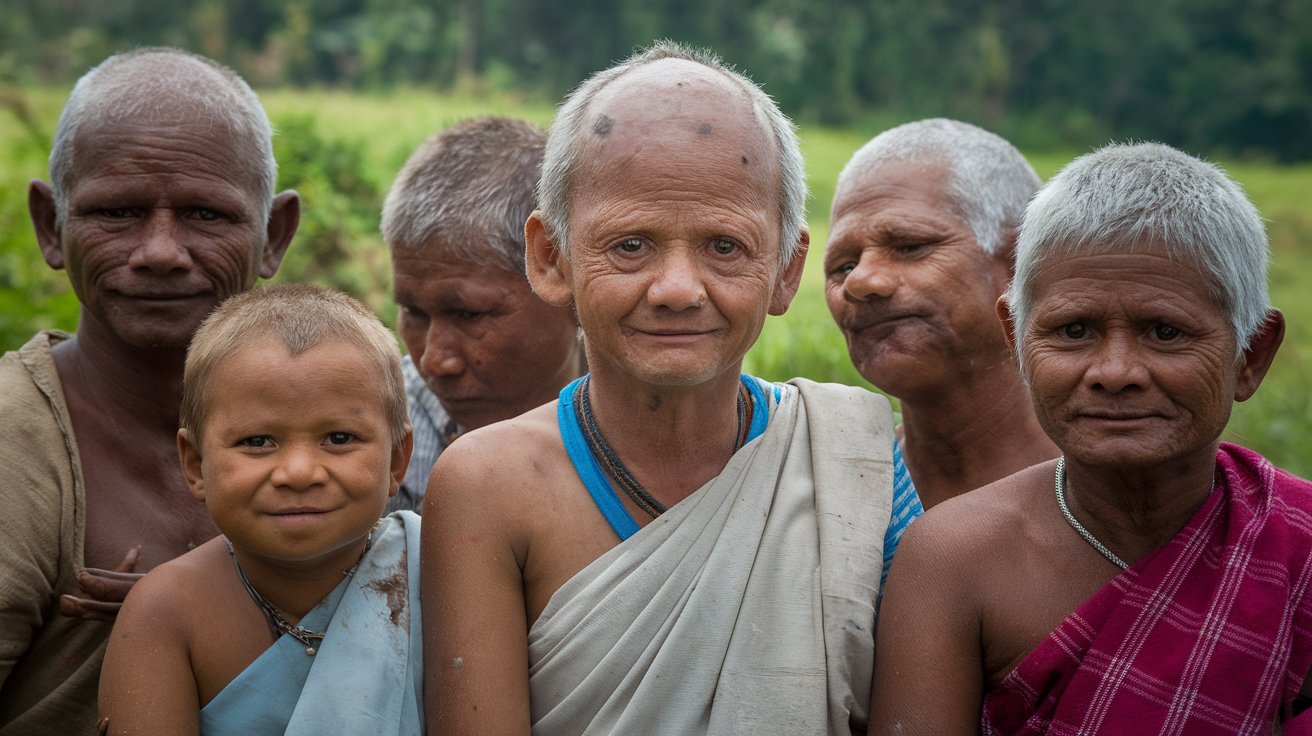
Handigodu Syndrome is a rare genetic disorder that primarily affects the skeletal system, leading to severe joint deformities and bone abnormalities. Named after the village of Handigodu in Karnataka, India, where the first cases were identified, this condition is both mysterious and debilitating. What makes Handigodu Syndrome particularly challenging is its rarity and the lack of specific diagnostic criteria. Individuals with this syndrome often experience significant pain, disability, and a reduced quality of life. Despite its rarity, understanding Handigodu Syndrome is crucial for improving diagnosis, treatment, and support for those affected. Let's delve into 20 key facts about this complex condition to shed light on its various aspects.
What is Handigodu Syndrome?
Handigodu Syndrome is a rare genetic disorder affecting the skeletal system. Named after the village of Handigodu in Karnataka, India, where the first cases were identified, this condition is marked by severe joint deformities and bone abnormalities. Let's explore some key facts about this rare disorder.
-
Definition and Classification
Handigodu Syndrome falls under osteoarthropathies, a group of disorders affecting joints and bones. It is characterized by severe joint deformities and bone abnormalities, often accompanied by other systemic symptoms. -
Prevalence
This syndrome is extremely rare, with only a handful of documented cases worldwide. Its exact prevalence is hard to determine due to its rarity and limited reporting.
Genetic Basis and Clinical Features
Understanding the genetic basis and clinical features of Handigodu Syndrome is crucial for diagnosis and management.
-
Genetic Basis
Believed to be an autosomal recessive disorder, individuals must inherit two copies of the mutated gene to express the condition. The specific genetic mutation remains unidentified but is thought to affect genes involved in bone and cartilage development. -
Clinical Features
Symptoms vary significantly between individuals. Common features include severe joint deformities, bone abnormalities, skin lesions, muscle weakness, and neurological problems, leading to significant disability.
Joint Deformities and Bone Abnormalities
Joint deformities and bone abnormalities are hallmark features of Handigodu Syndrome.
-
Joint Deformities
Severe joint deformities can occur in any joint but are most common in the hands, feet, knees, and elbows. These deformities often involve joint subluxation (partial dislocation) and contractures (permanent shortening of muscles and tendons). -
Bone Abnormalities
Bone issues include osteoporosis (bone thinning), osteopenia (bone weakening), and various types of fractures. These abnormalities cause significant pain and discomfort.
Systemic Manifestations and Diagnosis
Apart from skeletal issues, Handigodu Syndrome can manifest systemically, complicating diagnosis.
-
Systemic Manifestations
Systemic symptoms include skin lesions, muscle weakness, and neurological problems like seizures and cognitive impairment, significantly impacting quality of life. -
Diagnosis
Diagnosing Handigodu Syndrome is challenging due to its rarity and lack of specific criteria. Diagnosis typically involves clinical features, radiological findings, and genetic testing. MRI and CT scans help visualize joint and bone abnormalities.
Genetic Testing and Treatment Options
Genetic testing and treatment options play a vital role in managing Handigodu Syndrome.
-
Genetic Testing
Genetic testing is essential but less reliable due to the unidentified mutation. Researchers continue to work towards identifying the specific genetic mutation associated with the syndrome. -
Treatment Options
No cure exists for Handigodu Syndrome. Treatment focuses on symptom management and improving quality of life. Common treatments include physical therapy, pain management, and surgical interventions.
Surgical Interventions and Pain Management
Surgical interventions and pain management are critical components of treatment.
-
Surgical Interventions
Surgery may be necessary to correct severe joint deformities and improve mobility. Procedures like joint arthroplasty (joint replacement) and osteotomy (bone realignment) can alleviate pain and enhance function. -
Pain Management
Managing pain is crucial. Medications such as analgesics, anti-inflammatory drugs, and muscle relaxants help. Alternative therapies like acupuncture and physical therapy may also be recommended.
Rehabilitation and Psychological Impact
Rehabilitation and addressing the psychological impact are essential for comprehensive care.
-
Rehabilitation
Physical therapy helps maintain joint mobility, improve muscle strength, and enhance overall function. Occupational therapy assists with daily activities and maintaining independence. -
Psychological Impact
Living with a rare, debilitating condition can lead to depression, anxiety, and other mental health issues. Psychological support and counseling are vital components of care.
Family Planning and Research
Family planning and ongoing research are crucial for managing Handigodu Syndrome.
-
Family Planning
Given its autosomal recessive nature, genetic counseling is essential for affected families. It helps them understand the risks of passing on the mutated gene and make informed decisions about future pregnancies. -
Research and Awareness
Despite its rarity, Handigodu Syndrome remains an active research area. Studies aim to identify the specific genetic mutation and develop more effective treatments. Raising awareness is crucial for improving diagnosis and management.
Global Distribution and Ethical Considerations
Understanding the global distribution and ethical considerations is important for comprehensive care.
-
Global Distribution
Initially identified in India, cases have been reported worldwide. This highlights the need for international collaboration in research and awareness efforts. -
Ethical Considerations
Diagnosis and management raise ethical issues like informed consent, genetic privacy, and the rights of individuals with rare genetic disorders. Ethical guidelines ensure compassionate and respectful care.
Future Directions
Future research directions hold promise for improving outcomes for individuals with Handigodu Syndrome.
-
Future Directions
Research aims to identify the specific genetic mutation and develop targeted therapies. Advances in genetic engineering and gene therapy offer hope for better outcomes. -
Conclusion
Handigodu Syndrome is a rare, complex genetic disorder affecting the skeletal system. Comprehensive management strategies, including physical therapy, pain management, and surgical interventions, can significantly improve quality of life. Ongoing research and awareness efforts are crucial for better understanding and managing this rare condition.
The Rare Reality of Handigodu Syndrome
Handigodu syndrome is a rare genetic disorder that causes severe joint deformities, bone abnormalities, and other systemic issues. Named after a village in Karnataka, India, it’s an autosomal recessive disorder, meaning both parents must carry the mutated gene. Symptoms vary but often include joint subluxation, contractures, osteoporosis, and muscle weakness. Diagnosing it can be tough due to its rarity, relying on clinical features, radiological findings, and genetic testing.
Treatment focuses on symptom management: physical therapy, pain relief, and sometimes surgery. Rehabilitation and psychological support are crucial for improving quality of life. Genetic counseling helps families understand the risks of passing on the gene. Ongoing research aims to pinpoint the exact genetic mutation and develop better treatments. Raising awareness and international collaboration are key to advancing our understanding and management of this rare condition.
Was this page helpful?
Our commitment to delivering trustworthy and engaging content is at the heart of what we do. Each fact on our site is contributed by real users like you, bringing a wealth of diverse insights and information. To ensure the highest standards of accuracy and reliability, our dedicated editors meticulously review each submission. This process guarantees that the facts we share are not only fascinating but also credible. Trust in our commitment to quality and authenticity as you explore and learn with us.


